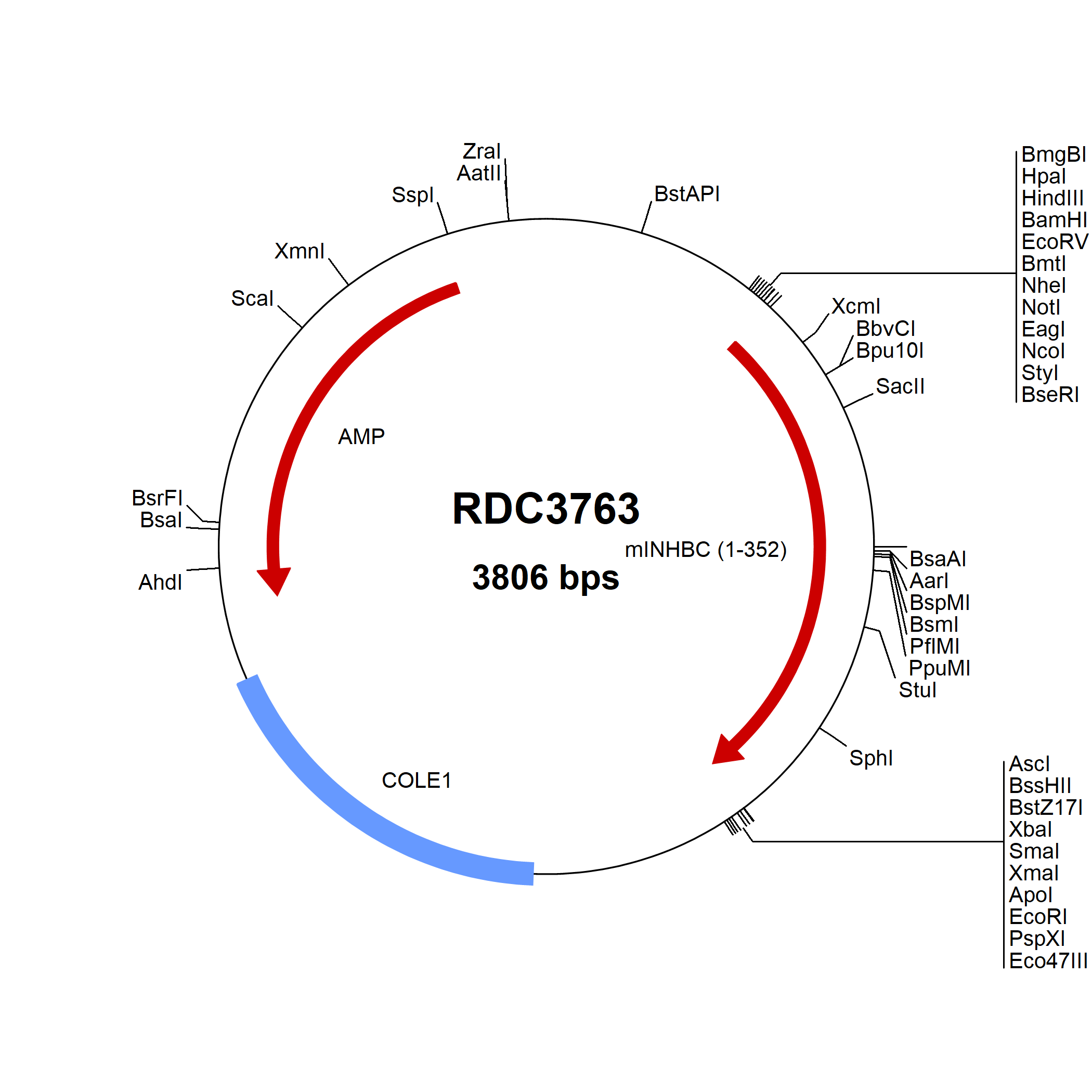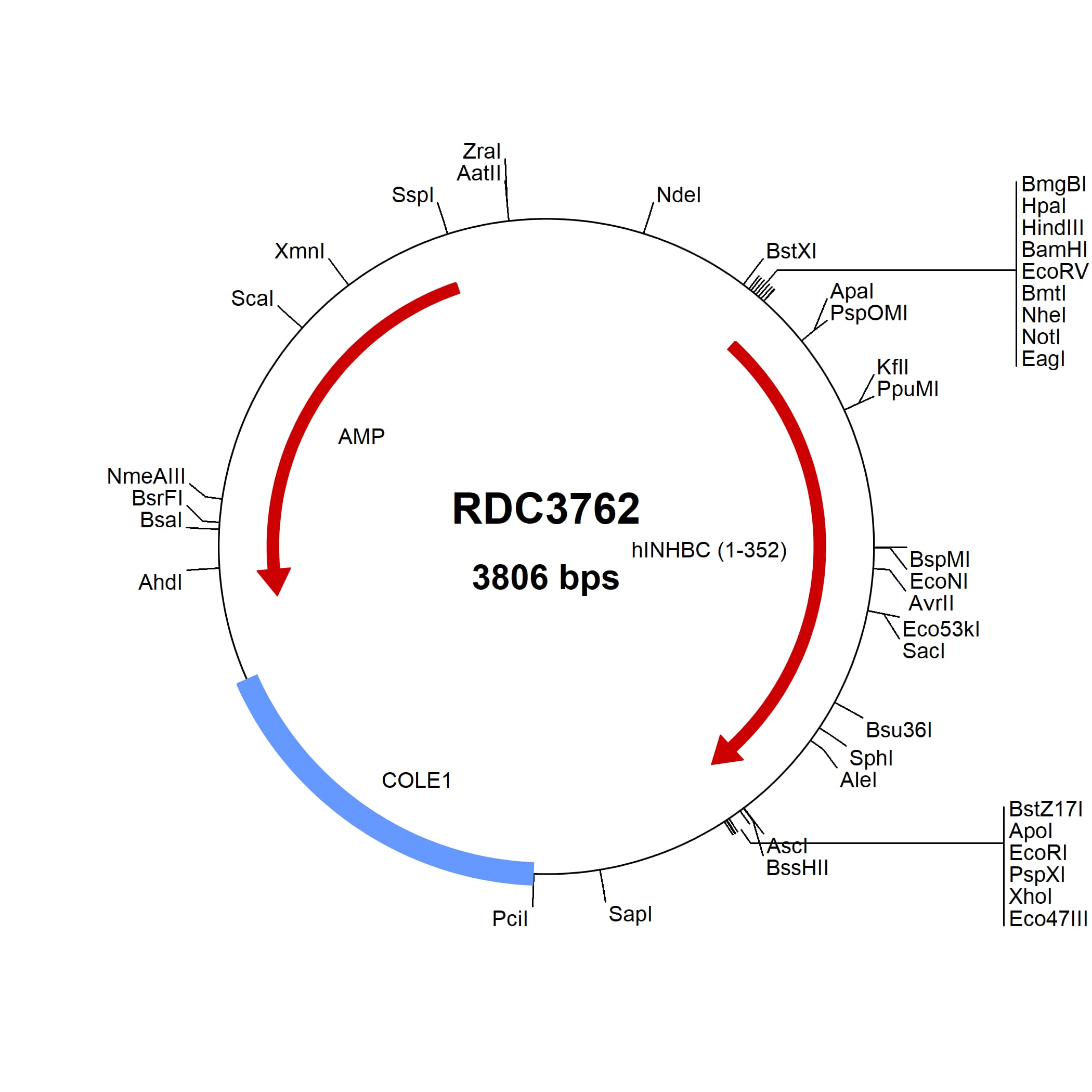Activin C: cDNA Clones
Activins and Inhibins are TGF beta superfamily proteins that regulate a wide range of processes including mesoderm induction, reproductive system development and function, liver growth and regeneration, wound healing, and inflammation. Activins signal through heterodimeric receptor complexes composed of type I (Activin RIA or RIB) and type II (Activin RIIA or RIIB) transmembrane Ser/Thr kinases.
Activin C is expressed as an approximately dimer predominantly by hepatocytes but also by multiple cell types in the male and female reproductive tracts, posterior pituitary and adrenal glands, and nociceptive afferent dorsal root ganglia neurons. It regulates Activin-induced effects in a variety of systems by forming intracellular dimers with the Activin A subunit and impeding the release of Activins A and AB. It functions extracellularly by interfering with Activin A‑receptor interactions. Activin C can additionally form heterodimers with the Activin B or E subunits.
Products:
2 results for "Activin C cDNA Clones" in Products
2 results for "Activin C cDNA Clones" in Products
Activin C: cDNA Clones
Activins and Inhibins are TGF beta superfamily proteins that regulate a wide range of processes including mesoderm induction, reproductive system development and function, liver growth and regeneration, wound healing, and inflammation. Activins signal through heterodimeric receptor complexes composed of type I (Activin RIA or RIB) and type II (Activin RIIA or RIIB) transmembrane Ser/Thr kinases.
Activin C is expressed as an approximately dimer predominantly by hepatocytes but also by multiple cell types in the male and female reproductive tracts, posterior pituitary and adrenal glands, and nociceptive afferent dorsal root ganglia neurons. It regulates Activin-induced effects in a variety of systems by forming intracellular dimers with the Activin A subunit and impeding the release of Activins A and AB. It functions extracellularly by interfering with Activin A‑receptor interactions. Activin C can additionally form heterodimers with the Activin B or E subunits.
Products:


